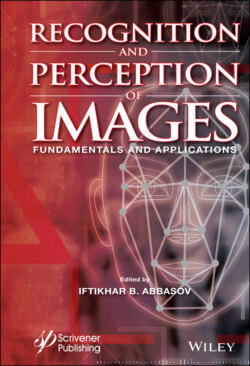Читать книгу Recognition and Perception of Images - Группа авторов - Страница 25
1.2.8 Object Identification
ОглавлениеThere are several theories of identification based on the distinctive features of surrounding objects. At the initial stage of anticipation, there is a fast processing of the information received, which allows you to perceive the basic, very simple and noticeable distinctive features of the object, the so-called perceptual primitives. The surfaces differ from each other by the simplest elements of the texture - by the textones, the specific distinguishable characteristics of the elements forming the texture. In Figure 1.2.21, one can observe a textural background from the set of letters P, Б, Ь; however, to find the letter B on such a background, concentration of attention will be required.
Figure 1.2.20 Light contrast.
Figure 1.2.21 Texture pattern of various letters.
According to another theory, object recognition begins with processing information about a set of primitive distinguishing features. Any object of three-dimensional space can be decomposed into a number of geometric primitives (geons: sphere, cube, cylinder, cone, pyramid, torus, etc.). On the basis of various operations of combining, intersection of surfaces of primitives, you can create new or analyze existing objects. Similarly, any letter can be obtained from a set of lines and curves. According to the theory of geons (geometric ions) by Biederman [Shiffman, 2008], a set of 36 geons will be enough to describe the shape of all the objects that a person is able to recognize. According to the experiments, the object is recognized; its geons are perceived as well. Usually, the description of an object includes not only its features, but also the relationships between the constituent parts. After describing the shape of the object, it is compared with an array of geons that are stored in memory, and the most appropriate match is found.
